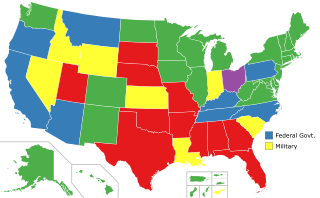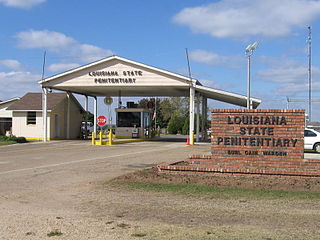This article needs to be updated.(September 2021) |
In 2020, there were 9,820 violent-crime incidents, and 11,349 offenses reported the U.S. state of Kentucky.
This article needs to be updated.(September 2021) |
In 2020, there were 9,820 violent-crime incidents, and 11,349 offenses reported the U.S. state of Kentucky.
In 2008, there were 122,960 crimes reported in Kentucky, including 198 murders. [1] In 2020, there were 9,820 violent-crime incidents, and 11,349 offenses reported in Kentucky by 423 law enforcement agencies that submitted National Incident-Based Reporting System data, and covers 99% of the total population.
| Crime in Kentucky, 2010 | ||||||||||
|---|---|---|---|---|---|---|---|---|---|---|
| Population | Violent crime | Murder and nonnegligent manslaughter | Forcible rape | Robbery | Aggravated assault | Property crime | Burglary | Larceny-theft | Motor vehicle theft | |
| Total crimes | (4,339,367) | 10,528 | 187 | 1,381 | 3,748 | 5,212 | 110,709 | 30,311 | 74,189 | 6,209 |
| Rate per 100,000 inhabitants | 242.6 | 4.3 | 31.8 | 86.4 | 120.1 | 2,551.3 | 698.5 | 1,709.7 | 143.1 | |
| Source: FBI Uniform Crime Report, 2010 | ||||||||||
Capital punishment is a legal penalty in the U.S. state of Kentucky.
Despite remaining a legal penalty, there have been no executions in Kentucky since 2008, and only three since 1976. The most recent execution was of Marco Allen Chapman, who was executed for two murders.
Capital punishment in Kentucky has been indefinitely suspended by court order since 2009. [2]Capital punishment, also known as the death penalty and formerly called judicial homicide, is the state-sanctioned practice of killing a person as a punishment for a crime, usually following an authorised, rule-governed process to conclude that the person is responsible for violating norms that warrant said punishment. The sentence ordering that an offender be punished in such a manner is known as a death sentence, and the act of carrying out the sentence is known as an execution. A prisoner who has been sentenced to death and awaits execution is condemned and is commonly referred to as being "on death row". Etymologically, the term capital refers to execution by beheading, but executions are carried out by many methods, including hanging, shooting, lethal injection, stoning, electrocution, and gassing.

In the United States, capital punishment is a legal penalty throughout the country at the federal level, in 27 states, and in American Samoa. It is also a legal penalty for some military offenses. Capital punishment has been abolished in 23 states and in the federal capital, Washington, D.C. It is usually applied for only the most serious crimes, such as aggravated murder. Although it is a legal penalty in 27 states, 20 states currently have the ability to execute death sentences, with the other seven, as well as the federal government, being subject to different types of moratoriums.

Capital punishment is a legal punishment under the criminal justice system of the United States federal government. It is the most serious punishment that could be imposed under federal law. The serious crimes that warrant this punishment include treason, espionage, murder, large-scale drug trafficking, or attempted murder of a witness, juror, or court officer in certain cases.

Capital punishment is a legal penalty in the U.S. state of Louisiana.

Capital punishment was abolished via the legislative process on May 2, 2013, in the U.S. state of Maryland.
Capital punishment is a legal penalty in China. It is applicable to offenses ranging from murder to drug trafficking. Executions are carried out by lethal injection or by shooting. A survey conducted by TheNew York Times in 2014 found the death penalty retained widespread support in Chinese society.
Capital murder refers to a category of murder in some parts of the US for which the perpetrator is eligible for the death penalty. In its original sense, capital murder was a statutory offence of aggravated murder in Great Britain, Northern Ireland, and the Republic of Ireland, which was later adopted as a legal provision to define certain forms of aggravated murder in the United States. Some jurisdictions that provide for death as a possible punishment for murder, such as California, do not have a specific statute creating or defining a crime known as capital murder; instead, death is one of the possible sentences for certain kinds of murder. In these cases, "capital murder" is not a phrase used in the legal system but may still be used by others such as the media.

Capital punishment is a legal penalty in Belarus. At least one execution was carried out in the country in 2022.

The use of capital punishment by the United States military is a legal punishment in martial criminal justice. Despite its legality, capital punishment has not been imposed by the U.S. military in over sixty years.
Crime rates in Alabama overall have declined by 17% since 2005. Trends in crime within Alabama have largely been driven by a reduction in property crime by 25%. There has been a small increase in the number of violent crimes since 2005, which has seen an increase of 9% In 2020, there were 511 violent crime offenses per 100,000 population. Alabama was ranked 44th in violent crime out of a total 50 states in the United States.
According to the Louisiana Uniform Crime reporting program, there were 177,710 crimes reported in the U.S. state of Louisiana in 2018. 2018 had the least amount of non-violent criminal offenses since at least 2008. Violent crime decreased from 2017 to 2018, but 2012 still remains the lowest with its record of 22,868. Rape went up 12.7% from 2017 while murder/non-negligent manslaughter declined 7.8%. Additionally, robbery dropped 15% and aggravated assault dropped 1.5%. Handguns remain the leading murder weapon with a rate of 44.7% with firearm following close behind at 35.7%. Together, these two contribute for 80.4% of the murders. Similarly, robberies were committed mostly with firearms in 2018. Firearms were leading with 52% and strongarm listed with a percentage of 35%.
In 2012, there were 451,142 crimes reported in the U.S. state of New York, including 686 murders. In 2014, 409,386 crimes were reported in the state, including 616 murders. This number further decreased in 2019, in which 335,736 crimes were reported, with 558 cases of murder. Throughout 2010-2019, violent crime dropped by 8.0%, and property crime dropped by -29.0%.
Crime in Utah manifests in various forms, including but not limited to violent crimes, property crimes, drug-related offenses, and white-collar crimes. While some regions in Utah report lower crime rates relative to national averages, certain urban areas experience elevated levels of specific types of crime. The state grapples with a range of law enforcement challenges that reflect both its urban and rural landscapes, as well as its unique sociocultural factors.
In the United States, the law for murder varies by jurisdiction. In many US jurisdictions there is a hierarchy of acts, known collectively as homicide, of which first-degree murder and felony murder are the most serious, followed by second-degree murder and, in a few states, third-degree murder, which in other states is divided into voluntary manslaughter, and involuntary manslaughter such as reckless homicide and negligent homicide, which are the least serious, and ending finally in justifiable homicide, which is not a crime. However, because there are at least 52 relevant jurisdictions, each with its own criminal code, this is a considerable simplification.
Being involved in the illegal drug trade in certain countries, which may include illegally importing, exporting, selling or possession of significant amounts of drugs, constitutes a capital offence and may result in capital punishment for drug trafficking, or possession assumed to be for drug trafficking. There are also extrajudicial executions of suspected drug users and traffickers in at least 2 countries without drug death penalties by law: Mexico and Philippines.
Capital punishment is a legal penalty in the U.S. state of Georgia. Georgia reintroduced the death penalty in 1973 after Furman v. Georgia ruled all states' death penalty statutes unconstitutional. The first execution to take place afterwards occurred in 1983.
Capital punishment in Missouri first used in 1810 is a legal penalty in the U.S. state of Missouri.
Capital punishment is a legal penalty in the U.S. state of Kentucky.
Capital punishment in Brunei Darussalam is a legal penalty, applicable to a number of violent and non-violent crimes in the Sultanate. Along with offences such as murder, terrorism, and treason, other crimes have become liable to the death penalty since the phased introduction of sharia from 2014. This includes homosexual activity since April 2019. Legal methods of execution in Brunei are hanging and, since 2014, stoning. The last execution in Brunei occurred in 1957, while it was still a British Protectorate.